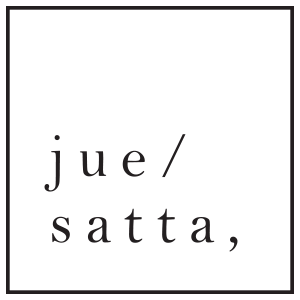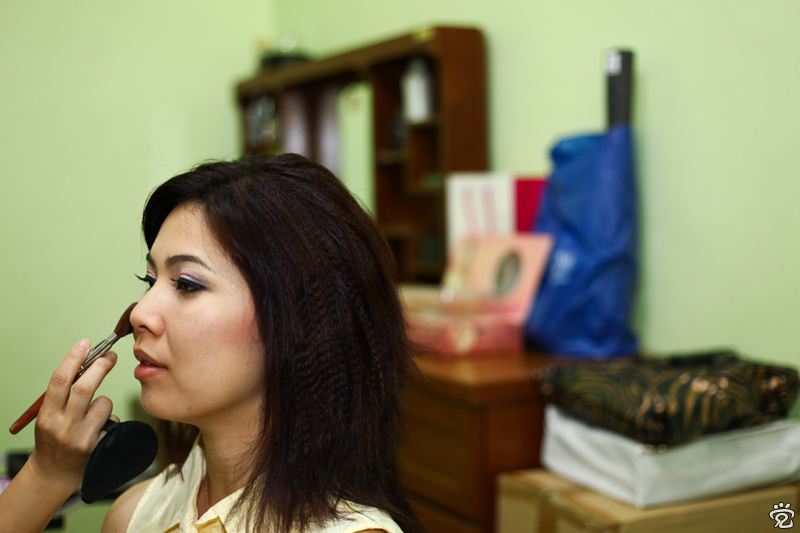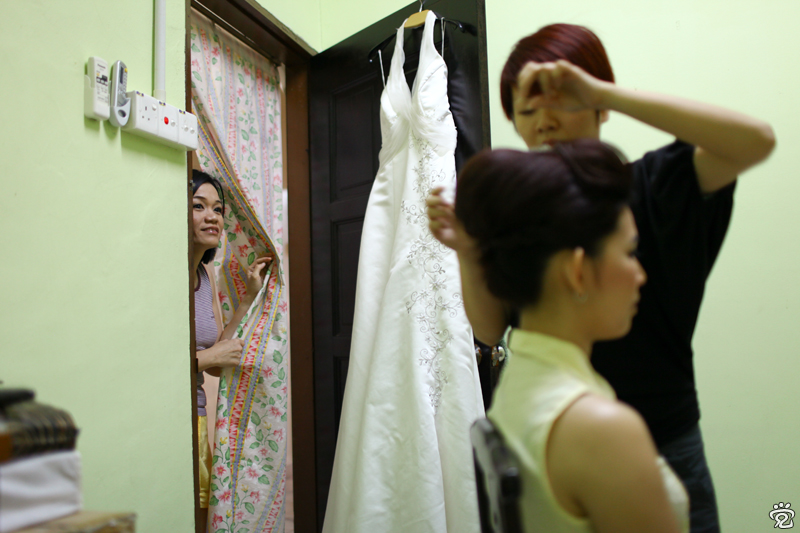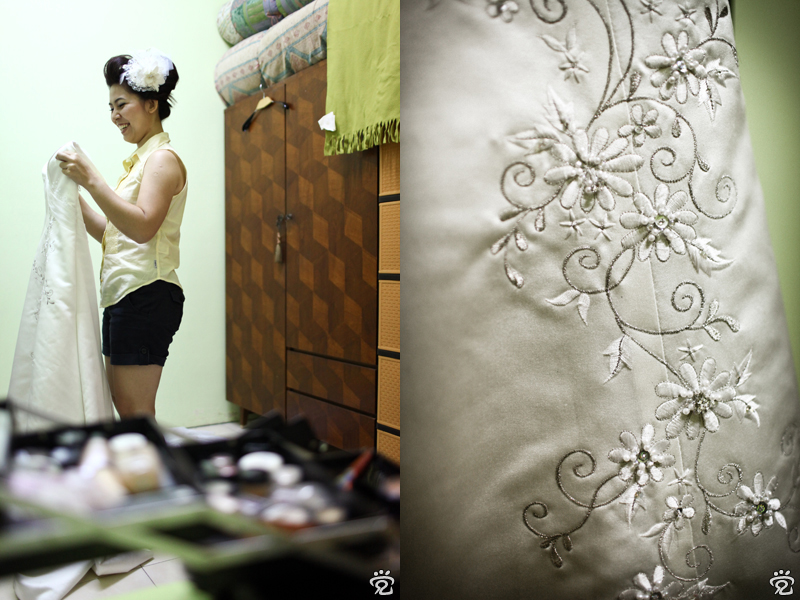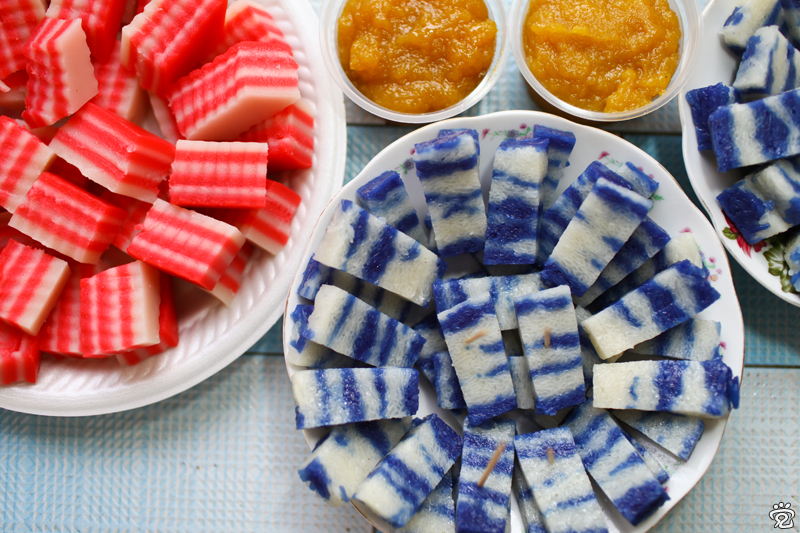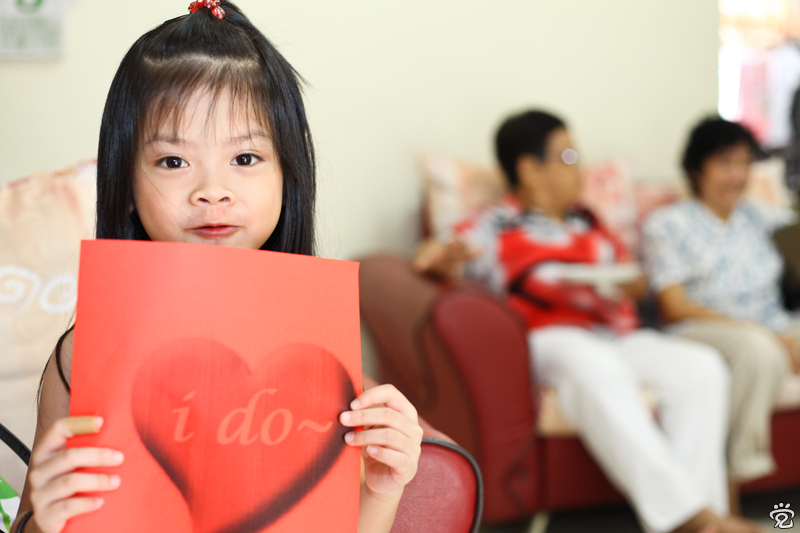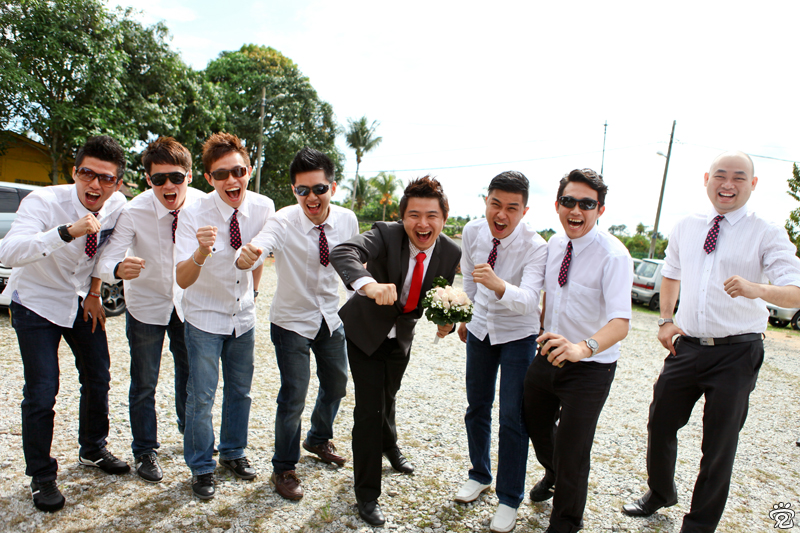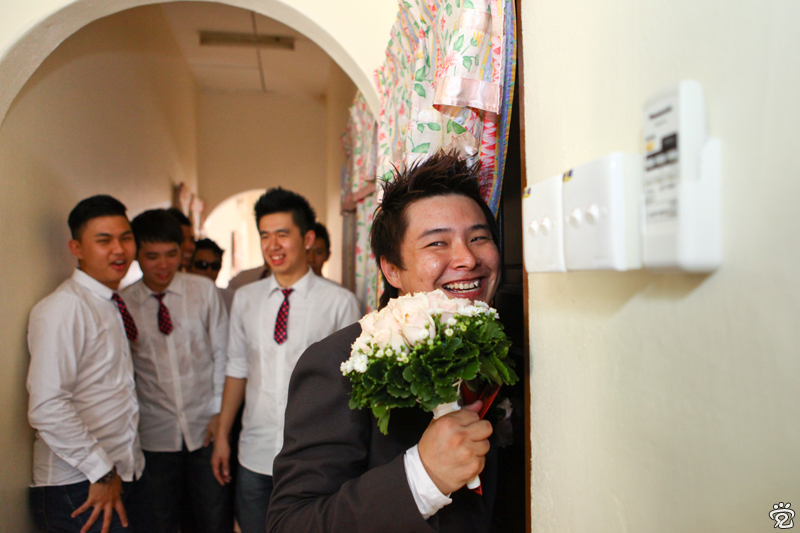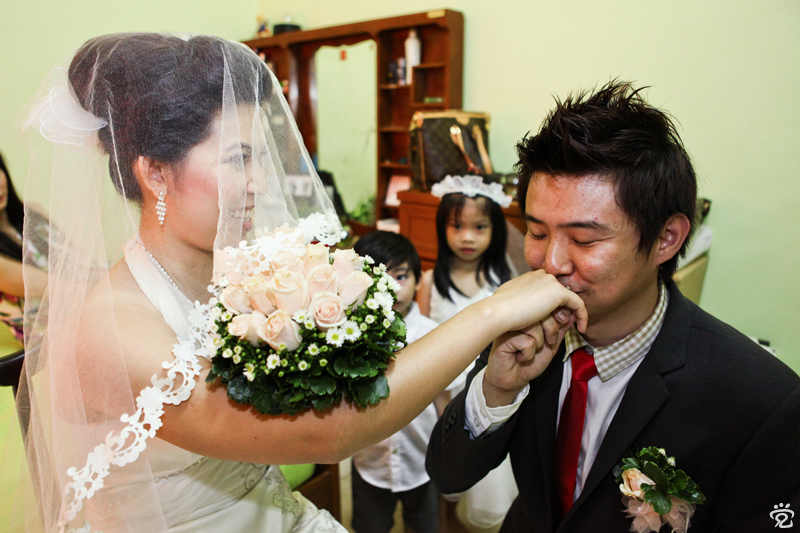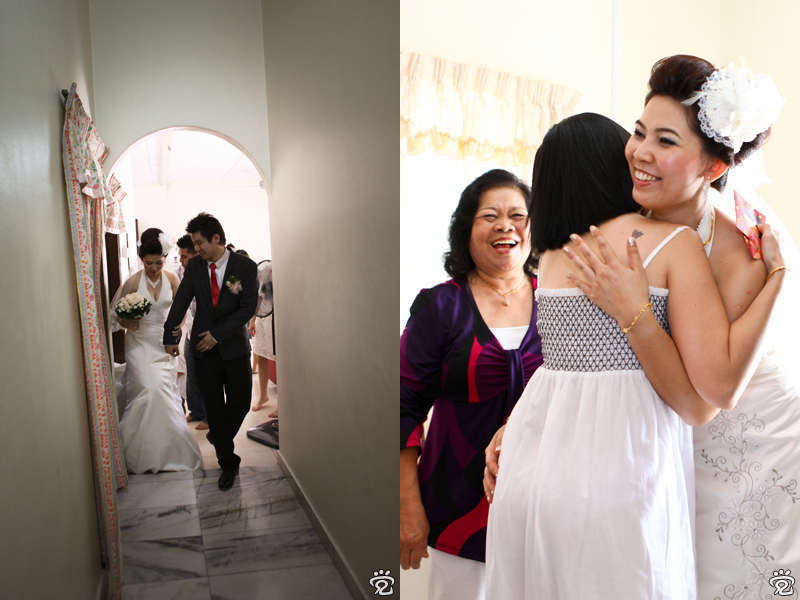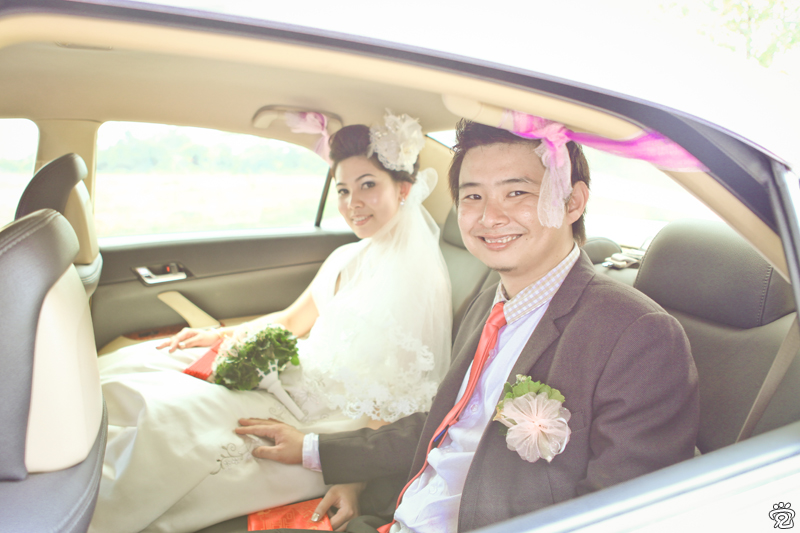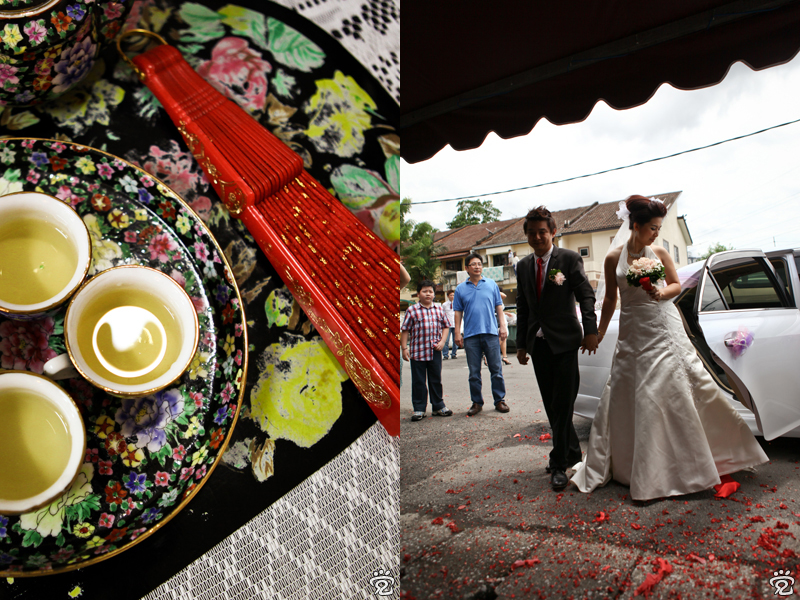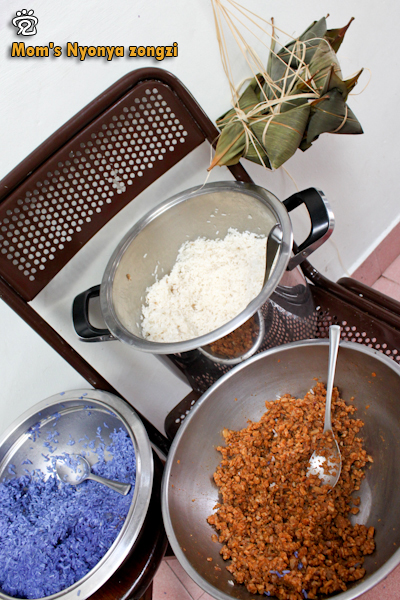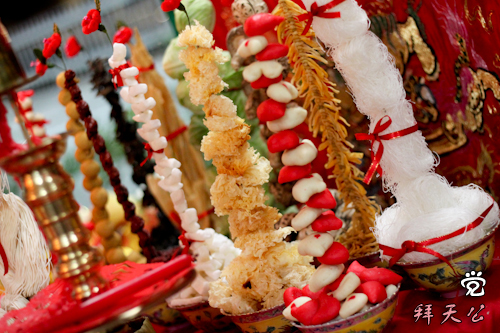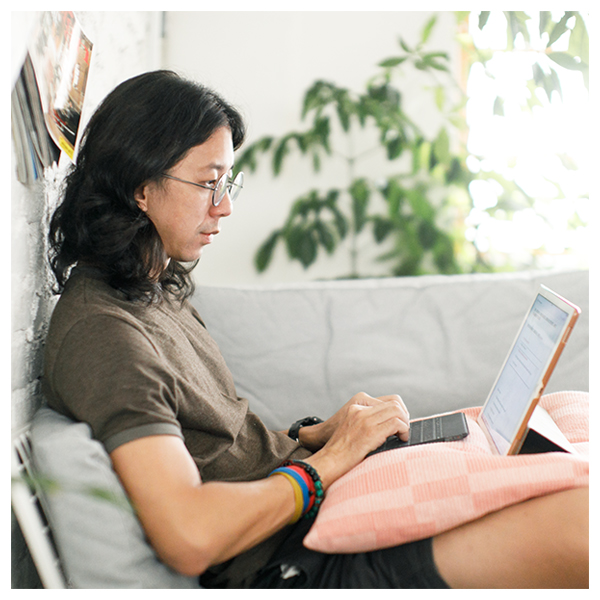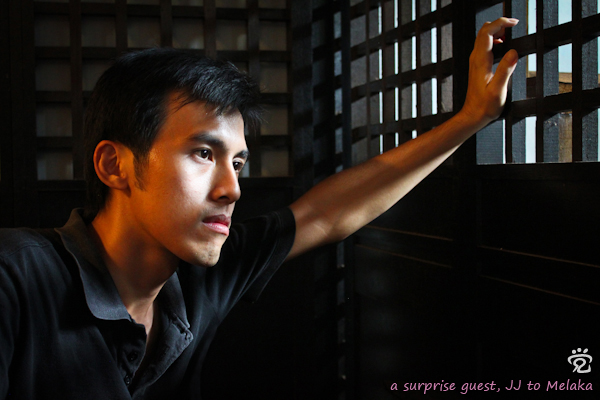
JJ, my ex-college friend who came with Yih-Shyang to Melaka
During the mid of August, I got a visit from my formal college friend, Yih-Shyang. He came and visited me months ago and then he was to come again. This time Yih-Shyang rang me and informed me that he would bring another friend with him from Kuala Lumpur. I didn’t question on that and thought that it would be his partner.
On that morning, Yih-Shyang drove and arrived at my place. It was really surprise when I saw the guest in the car! He was another ex-college mate whom I had not met for 7 years. JJ was the friend whom Yih-Shyang came with. We were so happy to see each other again because we had so much fun back in college. He was always a kind and easy-going guy.
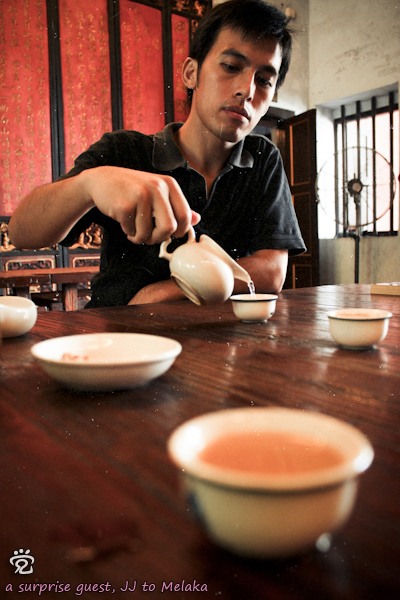
JJ at the Cheng Ho Tea House
It was rather a brunch, I brought the two of them to Jeta Groove. It is one of my favorites local Nyonya restaurants and also my favourite dessert, Nyonya durian chendol. After having some food at the restaurant, the durian chendol was served. It is a dessert which consists of shaved ice, coconut milk and red bean, and sweetened with gula Melaka (a kind of brown sugar). Its main ingredient is chendol, or noodle-like strips made of green bean flour strips. By the name of it, durian chendol is the chendol with some durian meat added into it and becomes so tasty. Both Yih Shyang and JJ just fall for it after taken.
After the meal, we had no idea where to go. They didn’t make plan for the day, rather to visit me and unwind in Melaka. Thinking it would be a great idea to sit down and have a good chat, we then went to have a Chinese tea ceremony at the Cheng Ho Tea House. We chatted while enjoyed the tea ceremony done by Mrs. Lai from the tea house. Before long Yih Shyang went into photography topi. Yih Shyang was suggesting doing some portrait photography and I nominated JJ.
JJ was however reluctant to be our model initially. Giving an excuse of keeping a memoir for JJ, we then took some photos of JJ at the tea house. Gradually we started to pose him and giving him commands what to do. He knew he was tricked but he was always nice and soft-hearted, therefore being obedience. So we had a nice tea and good photography session.
During the afternoon, we then headed to the seaside close to the Eye of Malaysia. After sight-seeing, we went to the bush area and continued our portraiture shooting of JJ. He was demanded to jump while we took some shots, until he got his muscles hurt. Yih-Shyang and I felt sorry for him and promised him a delicious dinner on that evening.
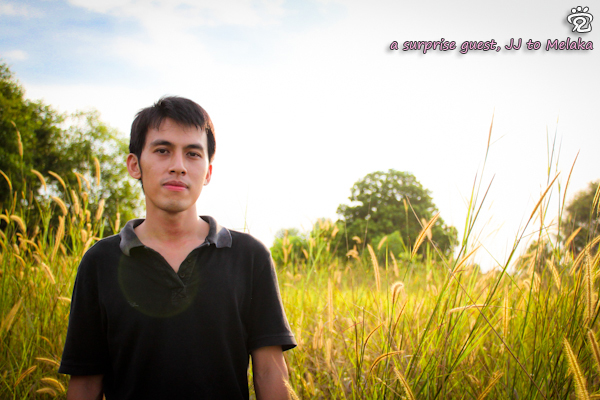
JJ posing for the camera in the bust near the Eye of Malaysia
Soon the dusk fell and we were starving. We then drove the Portuguese Settlement and quickly took some shots of sunset with only Yih-Shyang’s camera as the battery of my camera had gone flat. Then we picked a restaurant and had what Yih-Shyang requested, a Portuguese style seafood dinner. The serving was far more than what we ordered. Without wasting any food, we had everything on the dining table. In addition to that, both of them again fall for the local mango juice and each of them had 4 cups of it.
They would want to go to the Jonker Street for a walk of the night market. After the extravagant dinner we had, we were however so full that we wanted to go home and just sleep off the food coma that we were in. Yih-Shyang then took me home and we said goodbye.
Thanks to Yih-Shyang and JJ, who came all the way from Kuala Lumpur to visit me. I had a good time and was happy to see the both of them and update of their living. Sometimes it’s amazing to see how old friends have changed, to see how their lives are exciting or tragic or full of love (both of them good qualifiers of a life well lived).
Yih-Shyang and JJ had promised to come to Melaka again soon. Hope that they are happy now and I am looking forward to see them again. Share some shots of JJ.
Read More
